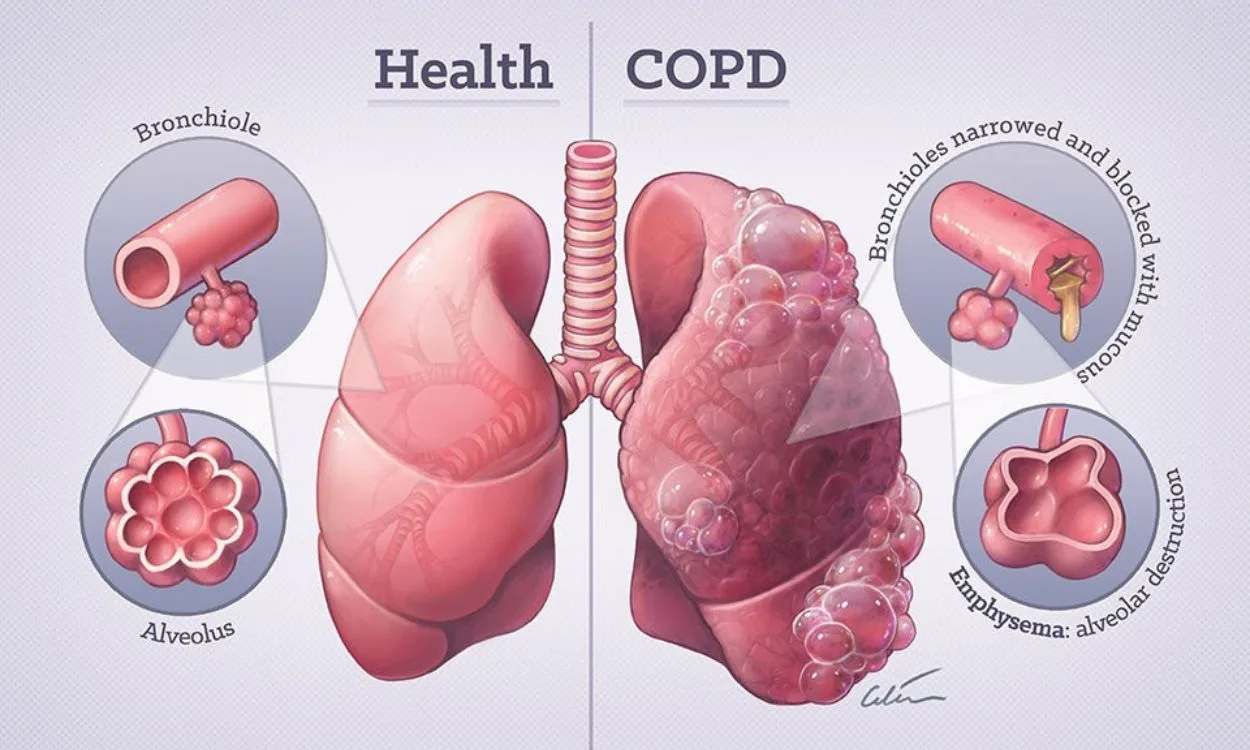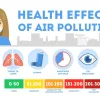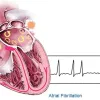What are the Symptoms of Chronic Obstructive Pulmonary Disease (COPD)?
COPD, or Chronic Obstructive Pulmonary Disease, is a progressive lung disease that affects millions of people worldwide. It is a leading cause of morbidity and mortality and is characterized by symptoms such as coughing, wheezing, and shortness of breath. In this article, we will discuss the symptoms of COPD in detail and provide insights into its management.
Symptoms of COPD
- Chronic Cough: One of the most common symptoms of COPD is a persistent cough that produces mucus. This cough is usually worse in the morning and may be accompanied by wheezing or a whistling sound when breathing.
- Shortness of Breath: People with COPD often experience shortness of breath, especially during physical activity or exertion. As the disease progresses, breathlessness may occur even during rest.
- Wheezing: Wheezing is a high-pitched whistling sound that occurs when air flows through narrowed airways. It is a common symptom of COPD and is caused by the obstruction of airflow in the lungs.
- Chest Tightness: Many individuals with COPD experience a sensation of tightness or discomfort in their chest. This can be due to the inflammation and narrowing of the airways.
- Fatigue: COPD can cause chronic fatigue and a lack of energy due to the increased effort required to breathe. People with COPD may find themselves easily exhausted and have difficulty performing daily activities.
- Frequent Respiratory Infections: COPD makes individuals more susceptible to respiratory infections such as bronchitis and pneumonia. These infections can exacerbate the symptoms of COPD and lead to further lung damage.
- Reduced Exercise Tolerance: As the disease progresses, individuals with COPD may experience a decline in their exercise tolerance. Physical activities that were once easy may become more challenging, leading to a sedentary lifestyle.
- Unintended Weight Loss: COPD can cause a loss of appetite and an unintentional weight loss. This can be due to the increased energy expenditure caused by the work of breathing and the overall impact of the disease on the body.
- Swelling of Ankles, Feet, or Legs: In severe cases of COPD, individuals may develop swelling in their ankles, feet, or legs. This is known as peripheral edema and occurs due to the weakened heart’s inability to pump blood effectively.
- Sleep disturbances: COPD can disrupt normal sleep patterns, leading to insomnia or frequent waking during the night. This can further contribute to fatigue and overall reduced quality of life.
Management of COPD
While COPD is a chronic condition with no cure, there are various management strategies that can help individuals effectively manage their symptoms and improve their quality of life. Here are a few key approaches:
- Medications: Medications such as bronchodilators and corticosteroids are commonly prescribed to manage COPD symptoms and reduce inflammation in the airways. These medications can help improve breathing and reduce exacerbations.
- Smoking Cessation: Since smoking is the leading cause of COPD, quitting smoking is crucial for managing the disease. Smoking cessation programs, nicotine replacement therapy, and medications can aid in the process of quitting.
- Pulmonary Rehabilitation: Pulmonary rehabilitation programs combine exercise training, breathing exercises, and education to help individuals with COPD improve their physical condition and learn strategies for managing their symptoms.
- Oxygen Therapy: In advanced stages of COPD, supplemental oxygen therapy may be prescribed to help maintain adequate oxygen levels in the blood and alleviate breathlessness.
- Lifestyle Modifications: Making certain lifestyle changes can also help manage COPD symptoms. These include maintaining a healthy weight, eating a balanced diet, staying physically active within one’s limits, and avoiding exposure to air pollutants.
- Vaccinations: Regular vaccinations, such as the flu vaccine and pneumonia vaccine, are important for individuals with COPD. These vaccinations can help prevent respiratory infections and reduce the risk of complications.
Fitpaa and COPD Management
Fitpaa is a comprehensive health and fitness platform that offers personalized support to individuals striving to achieve their health and fitness goals. While Fitpaa focuses on overall well-being, it can also be a valuable tool for managing COPD symptoms.
Fitpaa’s personalized approach takes into account an individual’s current health condition, lifestyle, and eating habits to create a tailored fitness plan. This plan can be adapted to accommodate the specific needs and limitations of individuals with COPD. Fitpaa’s real-time guidance technology can help individuals track their progress and stay motivated to follow their personalized fitness plan.
Additionally, Fitpaa’s mobile app provides resources such as a virtual workout trainer, diet tracker, performance tracker, and progress tracker. These tools can be beneficial for individuals with COPD who want to maintain an active lifestyle and manage their symptoms effectively.
In conclusion, COPD is a chronic lung disease that presents with various symptoms, including chronic cough, shortness of breath, and wheezing. While there is no cure for COPD, it can be effectively managed through a combination of medication, lifestyle modifications, and support from platforms like Fitpaa. By taking a proactive approach to managing COPD, individuals can improve their quality of life and maintain their overall health and well-being.
To learn more about managing COPD and experiencing the benefits of Fitpaa’s personalized fitness plan, download the Fitpaa app today and take the first step towards a healthier future!









